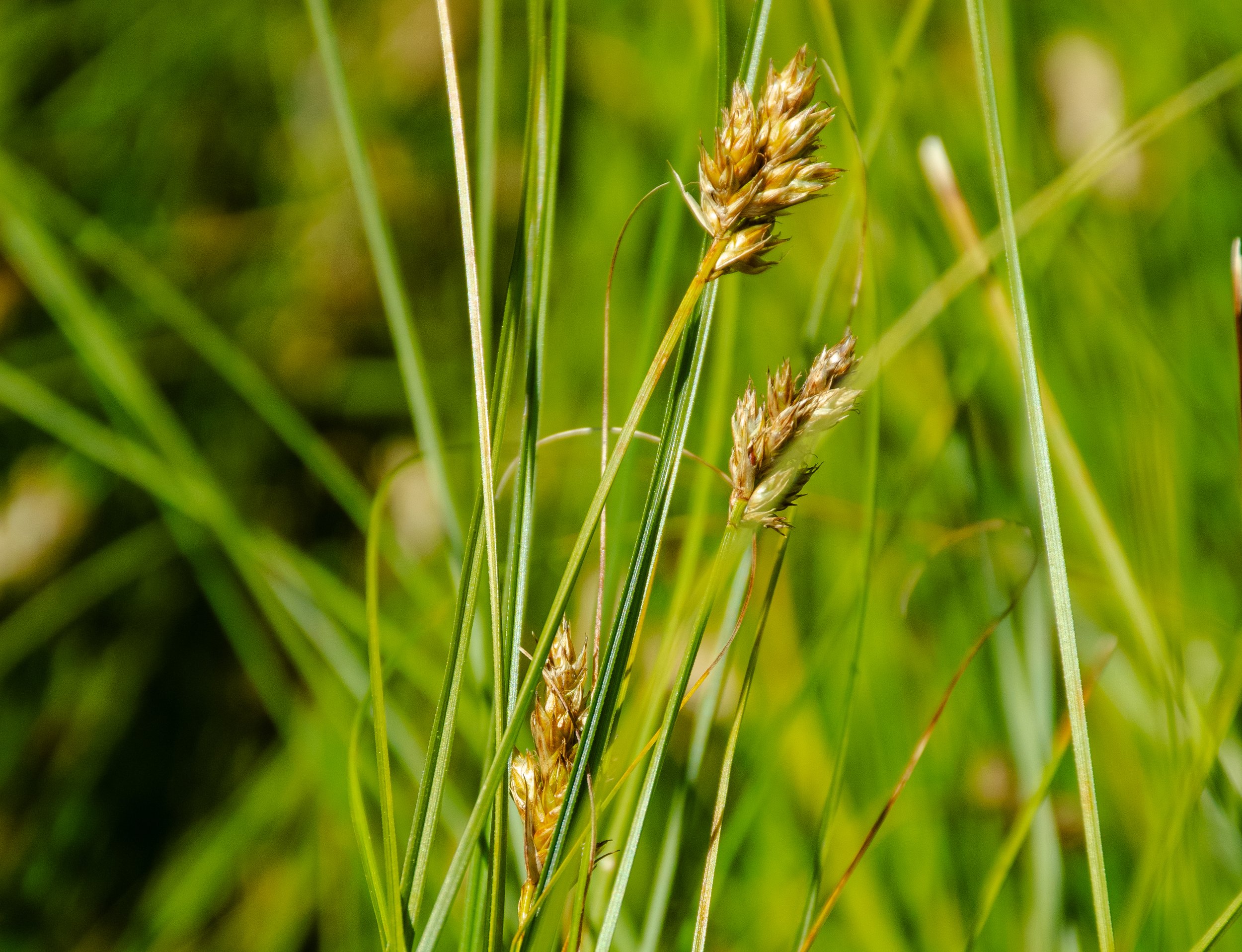
Clustered Field Sedge
Carex praegracilis
Carex praegracilis is one of the few plants that survive in the bottom of a swale. When it rains, water is collected from my roofline and piped to my bioswale, which is lined with Carex praegracilis. Most rainy events results in flooding in this area, but Carex survives it just fine, and actually appreciates that type of flooding. It forms a loose, lush, floppy green groundcover for less water than you’d think, but still more water than a traditional ‘low water’ lawn. It can be walked on and can be string trimmed for a tidier appearance. Use Carex in a native meadow if you plan on watering it, or if you’re OK with it going dormant, which, it will if you don’t water it. For me, it’s ecosystem functionality is what makes it a great plant— it has a deep root system with rhizomes (underground stems) that allow it to spread across an area. Those roots anchor soil that could be vulnerable to erosion in a swale, as well as hosting organisms and soil biology that breaks down pollutants and excess nutrients (bird poop, leaf litter, dead things) from my roof, cleaning the water before helping soak it into the ground and replenishing Inglewood’s aquifer.
